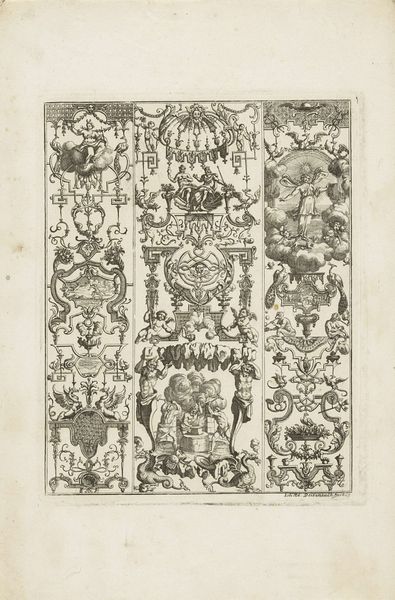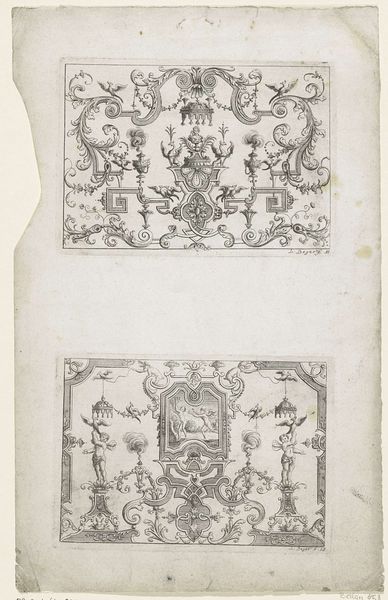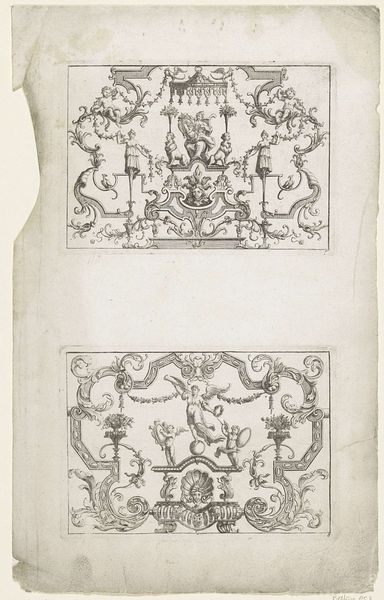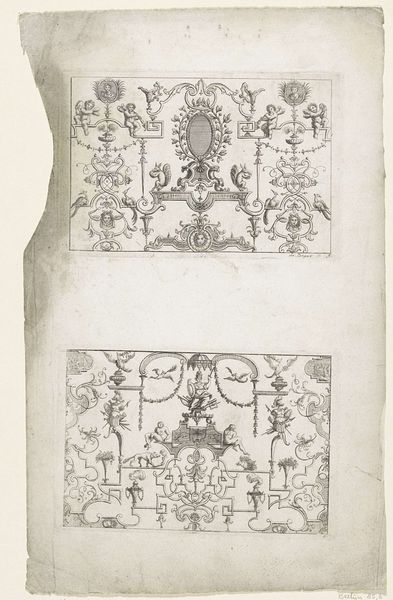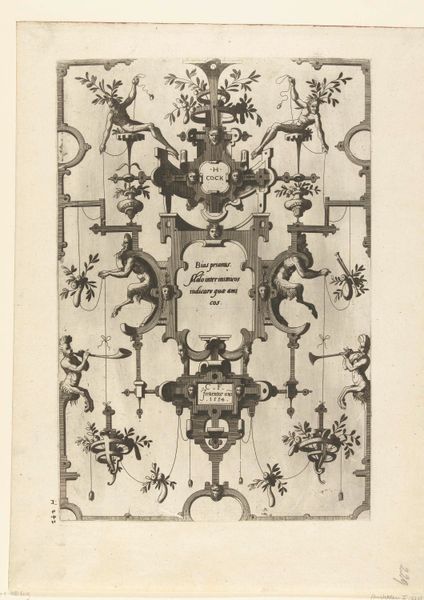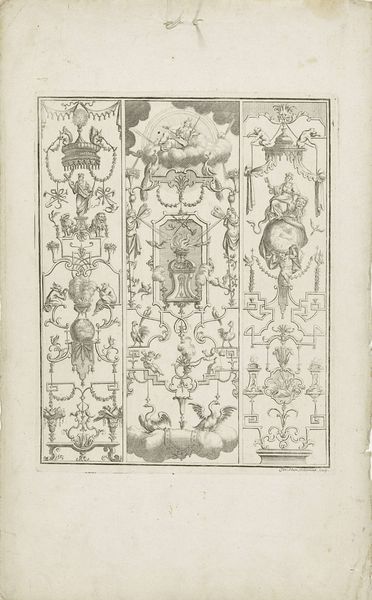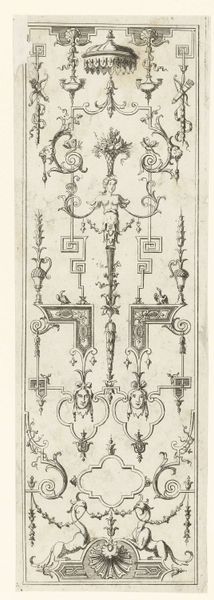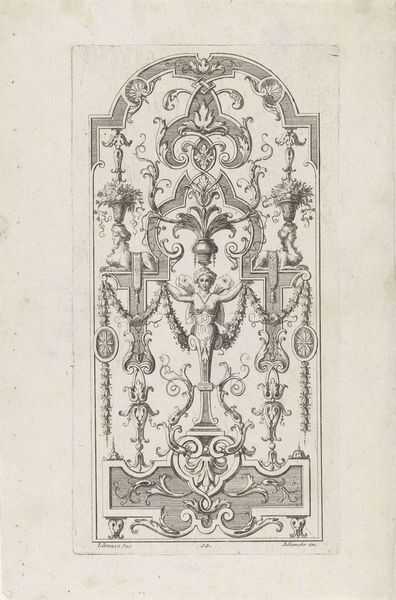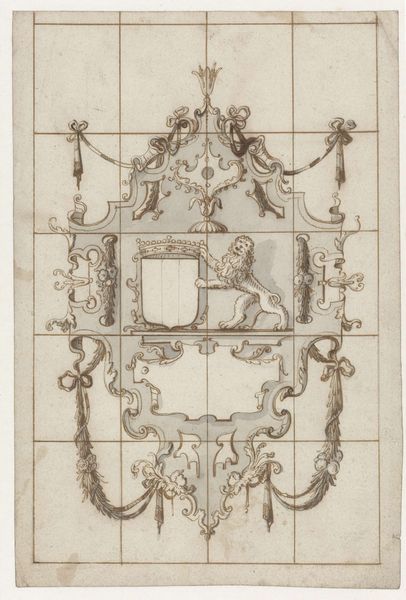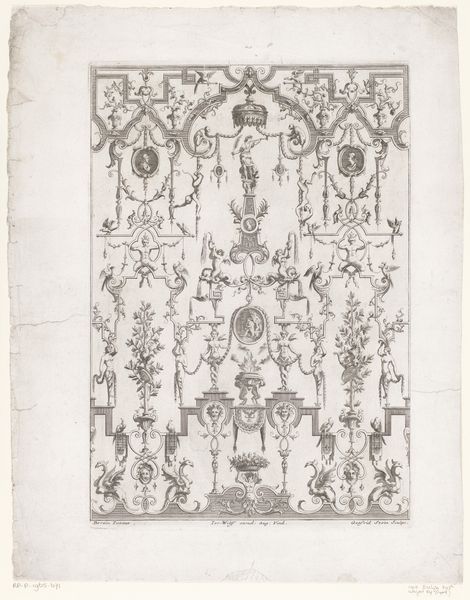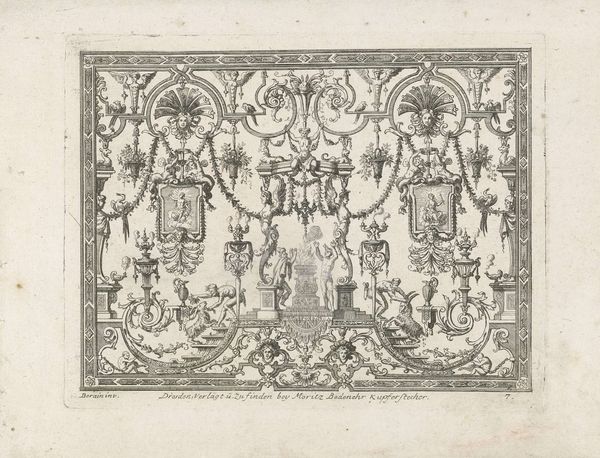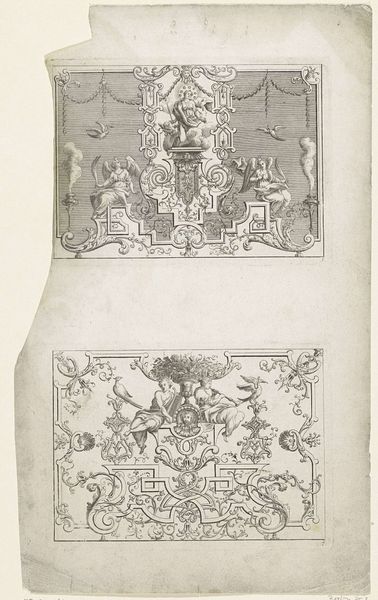
print, engraving
#
baroque
# print
#
old engraving style
#
figuration
#
line
#
decorative-art
#
engraving
Dimensions: height 110 mm, width 155 mm, height 331 mm, width 202 mm
Copyright: Rijks Museum: Open Domain
Curator: I'm drawn to the ornate detail in this print, titled "Grotesken met Bacchus en vrouwenfiguren," made between 1687 and 1725. The artist is Lorenz Beger, and he worked in engraving. Editor: It feels so theatrical, like looking at a stage set. The density of the figures and foliage is almost overwhelming, though I like how restrained the artist was in only using engraving, sticking to monochrome, almost like lace or tapestry. Curator: Precisely. This reflects the Baroque style’s love of elaborate, allegorical imagery. Note the prominent placement of Bacchus, the god of wine and revelry. He represents not just pleasure, but a connection to primal, instinctual forces within us. It brings to mind cycles of renewal through celebration, with those repeating vegetal forms suggesting regeneration. Editor: The repetition does create rhythm. What about the labor involved? These delicate lines wouldn't have happened without serious craft—etching takes real precision, especially on metal, it would need acid resists. You would also need paper to make the prints. Were those paper materials widely available back then? What did making and sourcing engravings look like at this time? Curator: Interesting, these details contribute greatly to the meaning. I find the choice of engraving particularly resonant. Think about its history, the engraving has served as a mode for replicating images, it is thus democratic by definition. Now this brings a fascinating nuance into the work given it pictures figures from the classic period in idealized forms. It speaks of the social construction of beauty across time. Editor: Absolutely! Engraving democratizing classical forms creates tension that’s really worth exploring from the time. Who consumed these prints? What was their relationship to the Bacchus figure depicted? Curator: Perhaps this print served a similar function – a means of imbuing the owner’s space with an air of classical erudition, yet mediated through the very accessible and modern medium of engraving. It brings us to reflect how material changes the image that survives. Editor: Well, it's been fun to peel back the layers of materiality and meaning. I'll certainly see baroque differently now.
Comments
No comments
Be the first to comment and join the conversation on the ultimate creative platform.
